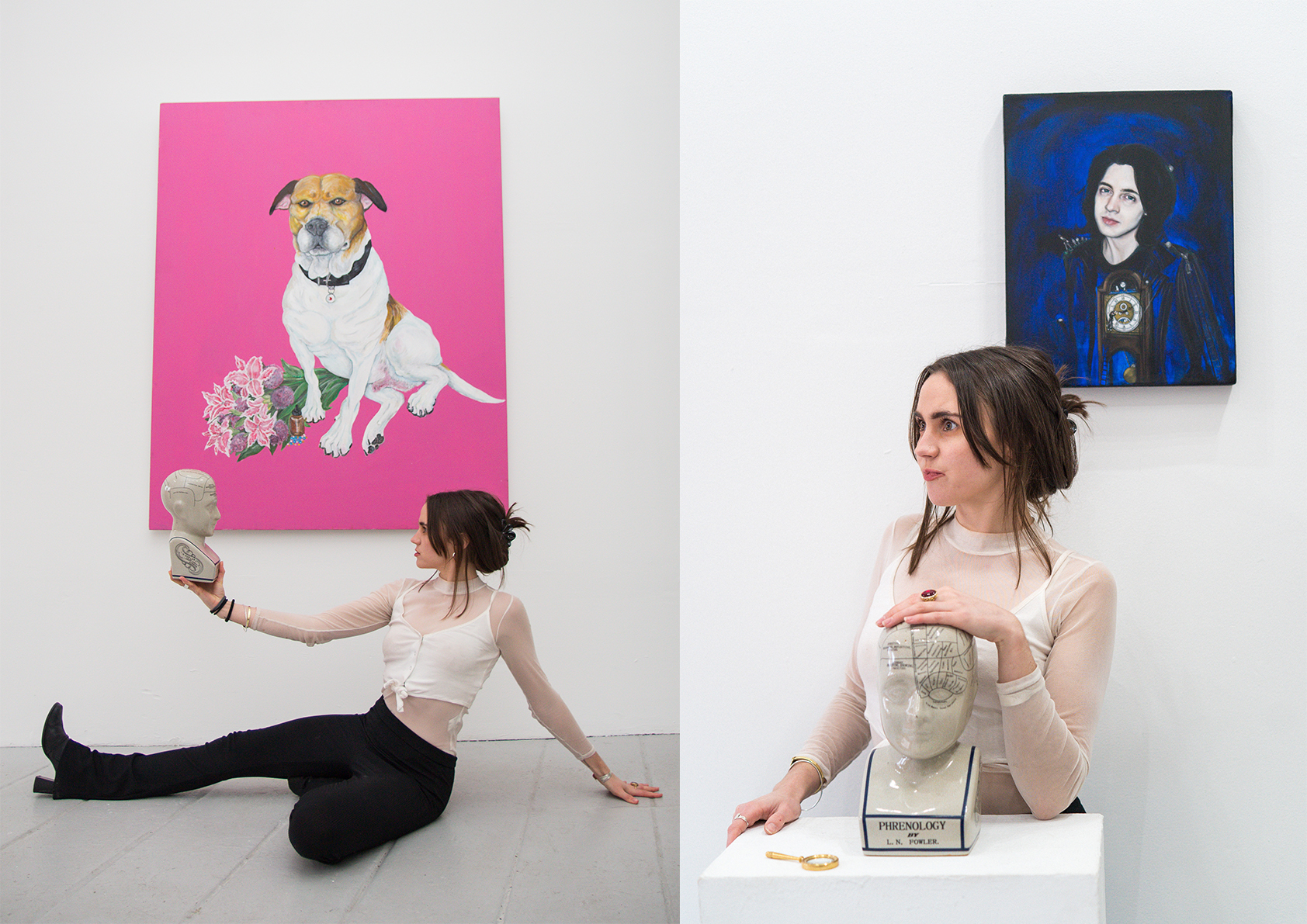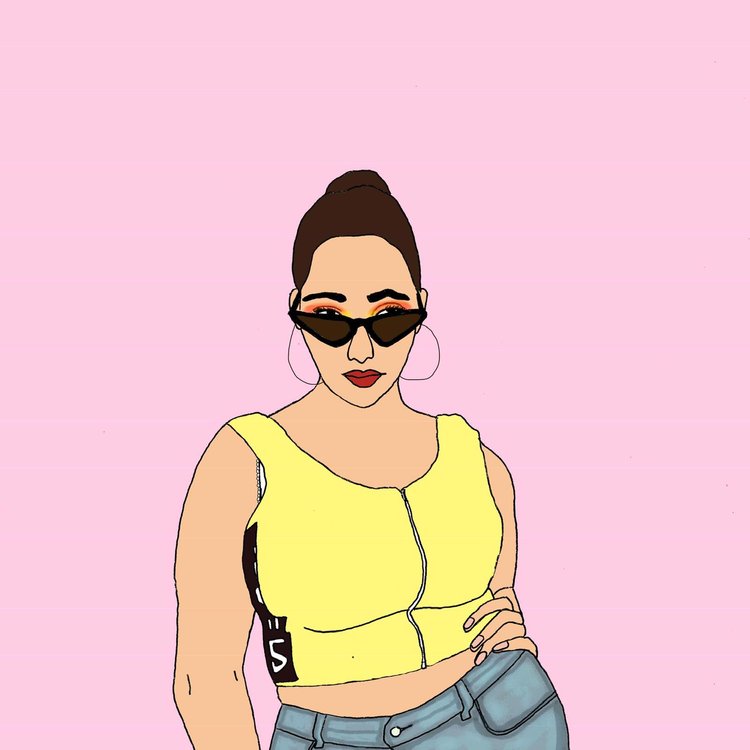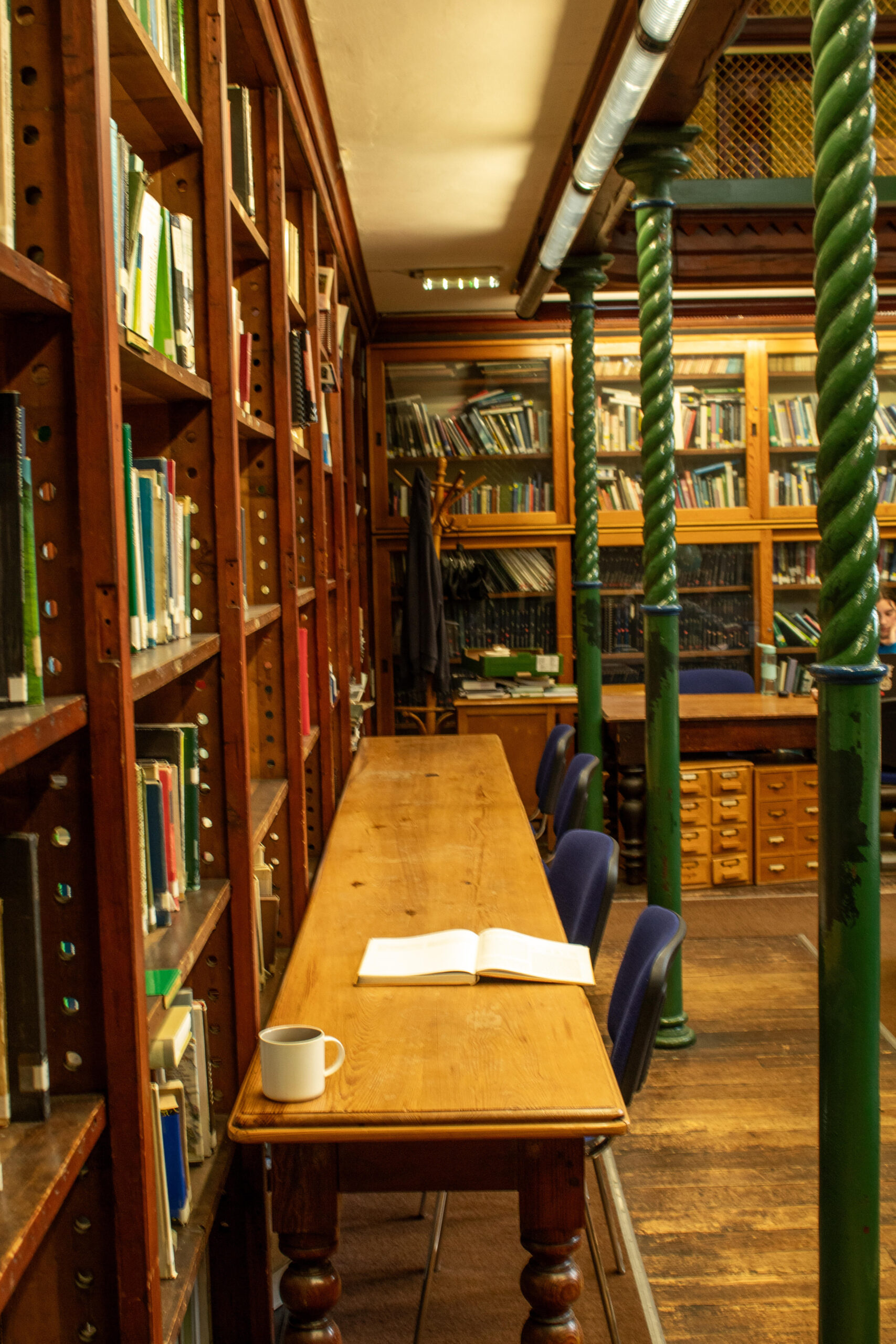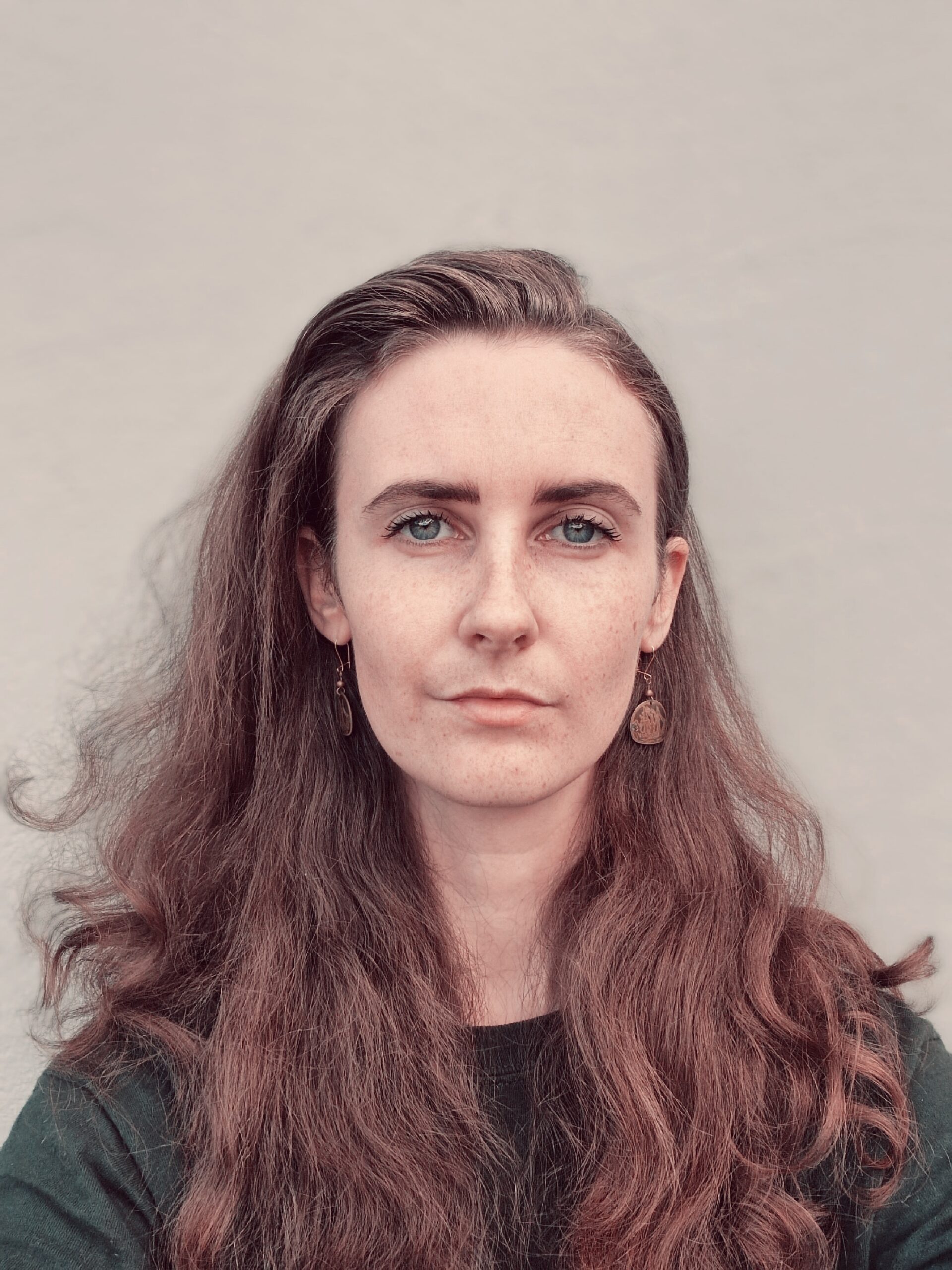
Collectives are in vogue in the art scene these days. Not limited to the realm of visual art, professions that have historically been a lone venture are exploding in a synergetic capacity at unprecedented levels. DJ cliques, such as GASH or Trinity’s own Midnight Disco and Distortion, curate parties that scintillate and draw huge crowds. Theatre-makers have always been collective orientated, as theatre is an art form that is inherently collaborative. Why have one talented artist when you could have an ensemble of innovators? All with separate stylistic choices that coalesce to create one unique vision and even manifest a community of creative output. Community is the key concept here, as among artistic circles this can be rare, and, unfortunately, symptomatic of the epidemic creative drain as well as the high immigration levels of art-orientated graduates.
Trinity graduates Morag Dine and Carla Jenkins co-founded the online art collective Big Birds as a response to their perception of the lack of diversity within the established art scene in Dublin. Speaking to The University Times, Dine admitted that the run-up to the repeal referendum was a great impetus to ignite the collective: “As wonderful as it was that all this amazing art was coming out about being a woman, about the problems of being a woman in Ireland and about being queer in Ireland, it just felt like the only people that were being published were men.” The two writers voiced their difficulty in finding a platform to publish their own work, as well as the discerning lack of parity within the framework of publishing.
There can often be a tendency for work by woman to be published only when centred around female issues, Big Birds aims to somewhat level the playing field. Dine asks: “Why are women held to this standard in which they have to be politicians, champions of social justice where people like Ernest Hemingway can write about having a coffee?” Speaking to The University Times, Jenkins also concedes that “you get pigeon-holed into categories like ‘burgeoning female artist’ and it makes you a writer but I don’t have to be defined by my gender, I’m just an artist”. It’s a tale we all know and loathe: there should be higher demand and more willingness to publish artists’ work purely based on merit alone. Big Birds aims to create a space where people can be artists in their own right, not to be limited by a specific realm of issues societally ascribed to them based on gender, sexuality or colour.
Sophie Murphy, a Trinity philosophy graduate, founded the collective Taproot, which specialises in exhibiting and selling contemporary art from both Irish and international artists. Speaking to The University Times, Murphy says that what the Dublin art scene is missing is lasting power. She feels that although Dublin is a hub of creativity, the domain of visual contemporary art hasn’t really been tapped into. “Collectives are not benefiting financially and there is no structure which creates an adhesive that allows these things to stay and grow.”
Time and again, collectives burst onto the art scene with such dazzling exuberance only to fizzle out. Murphy attributes this to the fact that Ireland is simply too expensive, lacking any sort of logistical hardwire which allows artists to continue to progress beyond a couple of exhibitions. This cyclical process of running out of steam is deleterious to fostering any sort of enduring and youthful creative community.
Murphy’s main role in the collective is to curate exhibitions and facilitate upcoming contemporary artists to display and distribute their work. In her mind, curating a cohesive exhibition is akin to being presented with a jigsaw with no photograph of the finished piece, and figuring out the rest yourself. Having no formal training in curation, Murphy has rapidly become very pertinent in coordinating her own shows, something she admits she never anticipated but appeals to a lot of parts to her. She had a very successful project entitled “Rednessness”, in which her fanaticism for the colour really took centre stage. Her next exhibition which opened on Friday November 30th, consists of primarily portraits and figurative works. “There isn’t a set way of how I acquire the art”, she maintains that “knowing the artist themselves has an impact on how I construe the art that’s created”. It’s certainly refreshing to meet a young curator with such panache and vigour for their work: “People are the root of everything that’s meaningful, art is a physical manifestation of how they view the world”.
These two collectives agree that exclusivity can often be a predisposition of the art world. Carla Jenkins admits that the sort of impenetrable stance advocated by certain coteries is something which Big Birds wishes to avoid: “Otherwise, is it just elitism dressed up as something artistic?” As the collective has grown, it has begun to curate the collections to a greater extent. Therefore it is inevitable that not every work submitted will be chosen. However, drawing from their own experience of the disheartening lack of response or rejection from publishers, the two try to provide constructive feedback and encouragement. The collective’s aphorism of “art free from discrepancies and discrimination” rings true in this vein, while both maintaining curational autonomy and giving a much-needed space to art for art’s sake.

Like Big Birds, the ethos of Taproot is resolute against any form of elitism. With regard to her exhibitions, Murphy says: “We’re living now, we’re trying to appeal to the broader spectrum, not trying to appeal to a minority of academic thought.” In her own words, Murphy wants to “shave off the prickly pretentiousness” so prominent in the visual art sphere. Her shows are elegant, espousing a beautiful, eclectic collection of paintings and sculpture. Yet she always adds a fun element to the events, in an attempt to make them more experiential. In Taproot’s last exhibition Pairs, which is centred around the power of dual relationships, Murphy offered pairs of fruit and vegetables, imparting an eccentric, humorous edge to the night, something that can be quite unusual for the seemingly aloof and serious world of modern art.
Fíor Studios, launched in March this year by architect and artist Amy McKeogh, is a multi-disciplinary design collective, which specialises in compounding the entire design experience with one selective team of innovators in areas such as architecture, interior and graphic design and branding. Speaking to The University Times, McKeogh said that she had always been fascinated by the way designers in parallel fields worked. “When a group of people who are creative come together, the joy is that they come from different backgrounds, they have different outlooks on things.”
She conceived of forming a collective while at university, maintaining the benefit of having others to devise designs with, to pull your work apart and question it. “I think a collective can only enrich anything you do in a design sense”, she said. This sort of cultural and artistic osmosis is an integral component of the collective process. It is especially transformative in a sense that diverse spheres, such as interior design and branding, can be informed by one another, heightening the overall stylistic tone of the work in question. “If I can pitch us as this entity then it will be more inviting for people to engage with us on a big project because we do cover all aspects.”
Fíor Studios is a collective and business venture, with companies commissioning them to consolidate their brand and workspace in a design capacity, whereas Big Birds functions as mainly an online platform. However, the Big Birds founders hope for it to propel beyond its mainly Dublin-based circle of artists. Dine deftly points out that as collectives expand, many transition into a zine or publishing house, a hope that her and Jenkins too share. “There’s definitely a switch from collective to publishers.” ID for example, which started out as a small collective, is now one of the biggest fashion magazines in the world. There’s an interesting juncture within the fluid definition of a collective, raising the question of whether there is a point at which it starts or stops being characterised as such?
Conversely, Taproot is a collective comprised of only one person. Murphy asserts that she doesn’t like eluding to the fact that Taproot is just herself because intrinsically it’s a collaborative process. “The artists are the ones doing the amazing work. They’re the ones that make the experience what it is”, she says. She has also worked with others from different artistic fields, including Unit 1 hip-hop artist Blue Niall, DJ Collective EVE and performer-videographer Hugh Cooney. “Collectives in general exist everywhere, no matter what creative field you’re in you’re always going to be collaborating and what you do is contingent on someone else.” When asked why she thinks collectives are such a popular endeavour among young creatives, Murphy replied: “It’s non-committal in the sense that when you’re only starting out you have less overhead and less to consider.”
It has become apparent that many young artists nowadays find it easier to work within a cooperative framework. McKeogh of Fíor Studios says: “I can see why it’s a culture that’s growing because I think freelance and the lone designer is quite hard and I think that working in a co-working space is nice having the connection to other designers to bounce ideas off.” Jenkins also spoke about the loneliness of freelance work from a writer’s perspective: “A lot of making art is about something you have to get rid within yourself, and it can be so horrible releasing it with no-one there and thinking, oh so I’ve done that, what was it?”
Art is the essence of our compulsive human reaction to the world. There are so many creatives out there who are going to make art regardless of the people around them. Murphy concludes that “collectives are just microcosms of what will happen anyway”. Yet, as opposed to the solitary pursuit of artistic endeavour, collectives offer artists an extra layer of security. They render a sense of belonging, in which art can be immediately appreciated, fostered and apprehended by similarly minded individuals. These microcosms, whether temporal or enduring, elevate the art scene, even for a brief moment in which they can inflame our creative minds through the power of unity. Whatever about the semantics of the term “art collective”, hopefully these three promising collectives will come to be defined by transformation and longevity, qualities that the Irish visual arts landscape vitally needs.






